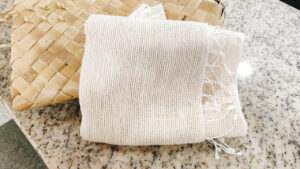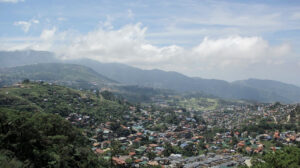Piña-silk, wool-like silk, and cocoon exfoliators

WE didn’t expect to find luxurious silk in rustic Bago City in Negros Oriental, but there it was, in scarves and cocoons at last month’s Negros Trade Fair in Glorietta.
The silk-reeling operations in Negros began around 20 years ago, according to Thelma Watanabe, President of the Negros Silk Producers’ Association during an interview with BusinessWorld at the Negros Trade Fair, which ran in late September. The project was spearheaded by Japanese-headquartered non-government organization OISCA (The Organization for Industrial, Spiritual and Cultural Advancement). During a tree-planting project, Japanese supporters of the organization saw the potential to plant mulberry trees. “Mulberry is very suitable for our climate,” said Ms. Watanabe. “It grows anywhere except in swampy places.” Mulberry leaves also happen to be the food of choice for caterpillars of the Bombyx mori, otherwise known as the silkworm.
The parent stock is from both China and Japan, and are provided to silk farmers who maintain the mulberry plants from which silkworms eat. The silkworms weave a cocoon as part of their metamorphosis, and these cocoons are then processed into silk threads.
“With our efforts, we were able to see the industry take off. We are now supplying the bulk of the silk being circulated in the local market,” said Ms. Watanabe. Most of the silk is used in Aklan, where silk is woven along with piña (pineapple fiber) to make a piña-seda (silk) blend. She showed a sample of the piña-silk hybrid, which was made into barongs that were worn by world leaders at the 2015 APEC Summit.
“When we started producing the cocoons, it was examined at random in Japan, and it proved to be of very competitive quality,” she said. “Maybe because of the water in Negros.”
She showed off a scarf, made of silk yarn. It did not have the smooth and silky nature that lent the material’s name to the adjective. Instead, it was fuzzy, like very light wool. “This is another type of yarn, which we produce from the innermost part of the cocoon,” she said.
“It may look like cotton, but it’s really very soft. Lighter, softer, and you can see the glow,” she said. “To produce the yarn for this is very hard. You will have to manually make it into yarn, with saliva,” she said. The spinner’s fingers are wet with spit to draw out the thread from the innermost part of the cocoon.
Speaking of cocoons, Ms. Watanabe showed us another product. Individual silk cocoons are cleaned and packed, and are placed on fingertips to use as facial exfoliators. According to her, not only do the cocoons slough off dead skin, but also impart silk proteins (sericin) to the skin, making the skin smoother and firmer. We did try using the exfoliators at home, and they did leave us with a glow that lasted about two days.
Silk farmers harvest around six to seven times in a year, and they are paid for the top-grade cocoons per kilogram, with the highest grade (AA) sold at P260 per kilogram, with farmers bringing about 26 to 28 kilograms per harvest.
“In the beginning, producing silk just augmented their income. But as they get so skilled in producing the raw cocoons, they have additional income, and maybe they can expand, and our silk industry will really put the Philippines on the map.”
For more information, contact the OISCA-Bago Training Center for native silk products at nspa.oisca@gmail.com. — Joseph L. Garcia




